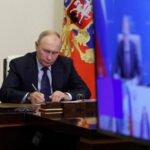The monetary unit of the Russian Federation is the Russian ruble. One rouble contains 100 kopecks. Currently, in monetary circulation there are bills for 10 (rare), 50, 100, 500, 1,000 and 5,000 rubles and coins for 1, 2, 5 kopecks (very rarely used), 10 and 50 kopecks (also not very liquid), 1, 2, 5 and 10 roubles. Bills for 5,000 roubles are quite difficult to change in small shops – it’s better to do so in supermarket chains and restaurants.
In Russia, paying in cash is best. The cards aren’t accepted everywhere, especially outside Moscow and St Petersburg. And even if a store or restaurant has an information notice that cards are accepted there, this information may not be true: due to technical failures “just today”, the communication between terminal and bank may not be working.
However, in recent years, most major chain stores and restaurants are seeking to introduce the option to pay by card and make the system technically stable.
You’re allowed to bring up to US$10,000 into Russia without additional declaration, and can take as much back out again.
As Russia, according to the register of some banks, is an “unsafe” area, your bank may block your card when you try to use it in Russia. Calling your bank will solve this problem.
In smaller shops, in response to an attempt to pay for your purchase by card, they’ll simply roll their eyes in surprise. And you can forget about travellers’ cheques: this currency is hardly ever accepted.
Where to change currency
It’s best to change money at banks. This is the safest way, as in exchange offices there are sometimes cases of fake bills. To exchange currency, you need to bring a passport or some other form of proof of identification. Finding a bank that offers currency exchange is easy: simply find your way using the signs on which the bright red figures show the rate for buying and selling dollars and euros.
Changing yuan for roubles is not so simple: not every bank or exchange office takes them. As a rule, this can be done only in the offices of major Russian banks – it’s almost guaranteed you can do so in “VTB 24” (ВТБ 24), and you can also get round the problem in the Orient Express Bank, “Sovietski” Bank, Gorbank, Lantabank, and branches of Chinese banks in Russia. But you should be prepared for the fact that a town (especially if it’s small) may not have a branch of the right bank, so it’s best to check in advance if there is one on the branch list on its website.
Dollars and euros can be exchanged at most banks and exchange points without any problems.
When changing currency, you need to establish whether the exchange is being made at the rate specified on the board. This is especially relevant at exchange points.
It often happens that, in order to attract attention, the board gives the exchange rate which will be applied above a certain amount (eg, $10,000 or more). Exchange offices always have a calculator that allows you to clearly see the amount you’ll get.
Before exchanging, it’s worth knowing whether the exchange office or bank charges an exchange fee: this happens very rarely, but it’s better to avoid any surprises.
Also, at a bank you can withdraw roubles via an ATM (with conversion), although there are restrictions here: the withdrawal amount may be limited to about $200. It’s best to ask the bank staff about this possibility and associated restrictions.
Source: Russia















